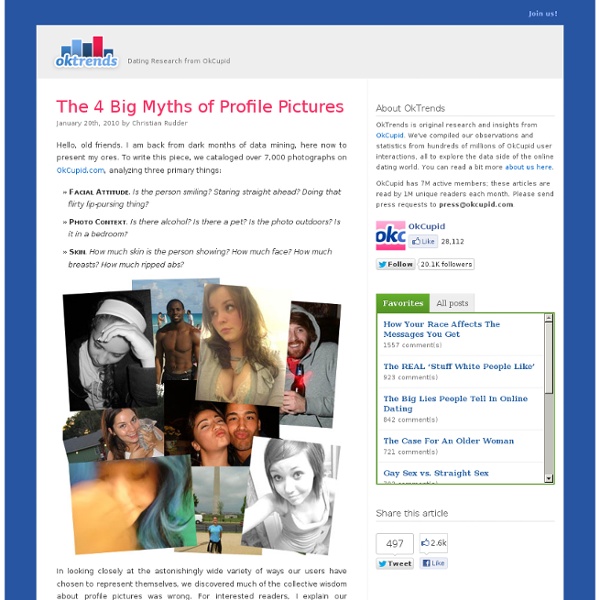A 3-Step Cure for Digital Packrats, and How to Know If You’re On
Post written by Leo Babauta. I have a confession to make: until recently, I was a digital packrat. While my outer life has become fairly simple, as I declutter my home and workspace, and my paper files have also become pretty simple, my digital life was a mess. I had all kinds of files on my hard drive, just because I thought I might need them. Trouble is, there are costs to such packrattery. How do I know? How to Know If You’re a Digital Packrat The main way to know: 1) you feel that you should keep a lot of files “just in case”; 2) it takes you too long to find stuff; 3) your digital life is becoming complicated, with multiple email accounts, drives, storage mediums and either a mess of files or a mess of folders. But here are a few symptoms: Do you have 20 or more folders and sub-folders in your documents folder on your hard drive? If you answered “yes” to more than one of these questions, more than likely, you’re a digital packrat. Go through a massive purge.
Super Mario Crossover
The Future: Operating System And Application-Neutral Data
We are now growing accustomed to the concept of the "cloud", where our data will be increasingly stored in Web services, not on local disk, accessible from any computer, operating system or browser. But, despite the adoption of standards from major players storing our personal data, the choice of services causes serious vendor lock-in, as the data suite, be it from Microsoft, Google, Apple or other providers, is not only interpreted by their offerings, but stored there as well. This storage and management of our data makes migration between services incredibly difficult, and still leaves us at the mercy of a large company, whose priorities may not be the same as our own. The time has come to start on a path to true ownership of data by the individual, reducing applications and Web services to the role of filters and containers, rather than hosts, who can propagate lock-in as these services spread to mobile devices and tablets from their desktop roots. So how do we make this happen?
Akinator
Zen Habits — Simple Productivity 3.6 Beta 2
100+ Google Tricks That Will Save You Time in School – Eternal C
[via onlinecolleges.net] With classes, homework, and projects–not to mention your social life–time is truly at a premium for you, so why not latch onto the wide world that Google has to offer? From super-effective search tricks to Google hacks specifically for education to tricks and tips for using Gmail, Google Docs, and Google Calendar, these tricks will surely save you some precious time. Search Tricks These search tricks can save you time when researching online for your next project or just to find out what time it is across the world, so start using these right away. Convert units. Google Specifically for Education From Google Scholar that returns only results from scholarly literature to learning more about computer science, these Google items will help you at school. Google Scholar. Google Docs Google Docs is a great replacement for Word, Excel, and PowerPoint, so learn how to use this product even more efficiently. Use premade templates. Gmail Use the Tasks as a to-do list.
WIN Human Recorder offers wireless, real-time health tracker | D
A company calling its collective group of body monitoring products the WIN Human Recorder system has released a new device called the HRS-I. Designed to measure and record a person's electrocardiographic signals, body surface temperature and overall body movements, the tiny unit can easily be worn under your shirt as you attend to your daily business. The device communicates wirelessly with a remote base and can last on a single charge for up to three days. Targeted toward companies working to monitor employee health, the HRS-I can be purchased for just 30,000 yen ($331) and the monitoring service costs just 10,000 yen ($110) per month. Via Nikkei
7 stupid thinking errors you probably make
The brain isn’t a flawless piece of machinery. Although it is powerful and comes in an easy to carry container, it has it’s weaknesses. A field in psychology which studies these errors, known as biases. Although you can’t upgrade your mental hardware, noticing these biases can clue you into possible mistakes.How Bias Hurts You If you were in a canoe, you’d probably want to know about any holes in the boat before you start paddling. Biases can be holes in your reasoning abilities and they can impair your decision making. Simply noticing these holes isn’t enough; a canoe will fill with water whether you are aware of a hole or not. Biases hurt you in a number of areas: Decision making. Here are some common thinking errors:1) Confirmation Bias The confirmation bias is a tendency to seek information to prove, rather than disprove our theories. Consider a study conducted by Peter Cathcart Wason. This is the tendency to see patterns where none actually exist.



